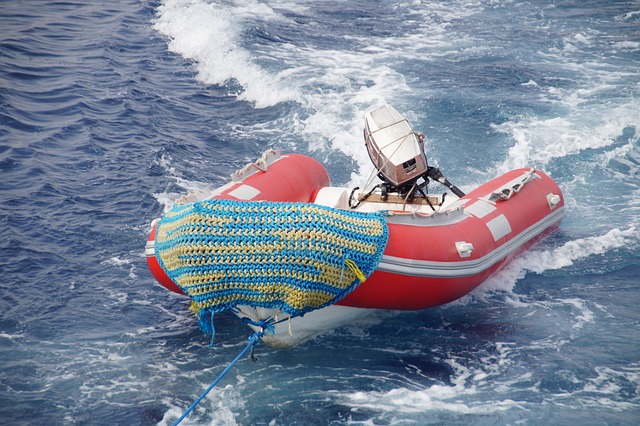In settings with water play, like swimming pools or water parks, prioritizing safety through slip-resistant surfaces is crucial. These surfaces reduce friction in wet conditions, preventing accidents and injuries, especially for children on inflatable attractions like water slides. Proper setup, regular maintenance, and using materials with natural rubber or specialized plastics with textured surfaces are key to ensuring the safety of best inflatable water slides. Top amusement parks like Six Flags and case studies at SeaWorld demonstrate that prioritizing slip resistance can significantly reduce accidents while maintaining a safe and engaging experience for all visitors.
In today’s active aquatic play environment, ensuring safety is paramount, especially on slippery surfaces. This article explores slip-resistant solutions for enhanced water play experiences, focusing on inflatable water slides. We delve into the importance of understanding surface characteristics, providing a comprehensive guide to best practices for installation and maintenance. Through examining successful case studies, we highlight how the right materials and innovative designs can revolutionize water parks, ensuring both fun and safety with top-tier best inflatable water slides.
Understanding Slip-Resistant Surfaces: The Need for Safety in Water Play
In any setting involving water play, whether it’s a swimming pool, a water park, or even an in-ground sprinkler system, ensuring safety is paramount. One of the most effective measures to prevent accidents and injuries, especially for children, is the implementation of slip-resistant surfaces. These specialized surfaces are designed to reduce friction, making them less prone to slips and falls, which can be particularly hazardous in wet conditions, as found on best inflatable water slides.
The need for slip-resistant surfaces cannot be overstated, especially in public spaces where a variety of users with different levels of skill and experience gather. By adopting these safety measures, facilities can significantly lower the risk of accidents and ensure that everyone, from young kids to adults, can enjoy water play without worry. This proactive approach not only enhances safety but also contributes to creating an enjoyable and welcoming environment for all visitors.
Best Practices for Inflatable Water Slides: A Comprehensive Guide
When it comes to ensuring safety with best inflatable water slides, proper setup and regular maintenance are paramount. Place slides on level, firm surfaces, using interlocking or anti-slip matting beneath for added stability against shifting. Regularly inspect for any tears or damage and repair promptly to prevent accidents. Cleaning and drying after each use extends the lifespan of the slide, preventing mold and mildew buildup, which can be a health hazard. Additionally, always follow manufacturer guidelines regarding age limits, weight restrictions, and supervision requirements to guarantee a fun and safe experience for all users.
Choosing the Right Materials: Enhancing Slip Resistance in Water Play Areas
When designing or selecting water play areas, especially for public spaces and playgrounds, choosing slip-resistant materials is paramount for safety. Opting for the best inflatable water slides involves considering surfaces that offer superior traction to prevent accidents. Natural rubber and specialized plastics are top choices due to their inherent grip and ability to withstand the rigors of water exposure without becoming slick.
For enhanced slip resistance, texture plays a crucial role. Incorporating rough or ridged surfaces into water play equipment can significantly reduce the risk of slips and falls. The right material combination ensures that even when wet, the surface maintains its integrity, providing a safe environment for children to enjoy activities like sliding on inflatable slides without concern for unexpected skids.
Case Studies: Successful Implementation of Slip-Resistant Surfaces in Water Parks
Water parks are prime examples of venues where slip-resistant surfaces can significantly enhance safety. Many top water parks worldwide have successfully implemented these measures, demonstrating their effectiveness in preventing accidents and fostering a fun environment. For instance, look at the world-renowned Six Flags amusement parks, which feature best inflatable water slides with textured, grippy surfaces designed to reduce the risk of slips and falls. These slides have become industry standards due to their ability to maintain safety while keeping visitors engaged.
Another notable example is SeaWorld, where recent renovations focused on enhancing pool areas with slip-resistant coatings. This move has led to a notable decrease in accident rates without compromising the park’s thrilling water attractions, including its famous wave pools and interactive play areas. These case studies show that prioritizing slip-resistance does not have to mean sacrificing fun or aesthetics; it can be a game-changer for water parks looking to offer both safe and thrilling experiences.
In light of the above discussions, it’s clear that implementing slip-resistant surfaces significantly enhances safety during water play. By understanding the needs, best practices, and choosing the right materials, as highlighted in this article, including case studies on successful implementations in water parks, you can ensure a fun yet secure environment for all with the best inflatable water slides. Remember that prioritizing safety through these measures is not just a recommendation but a crucial step towards minimizing accidents and fostering a vibrant and bustling water play experience.
